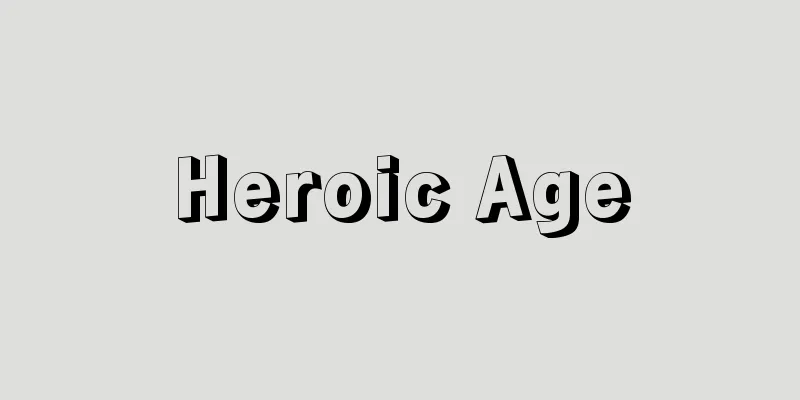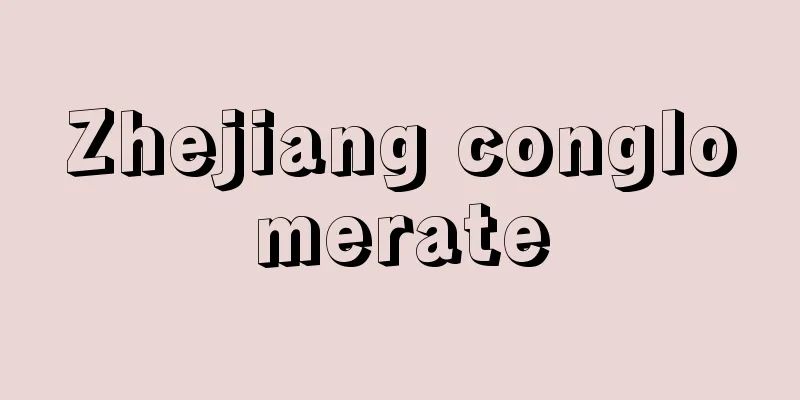Heroic Age

|
In Homer's epics, heroes (Greek: hēros) play an active role as leaders of free warriors, and so the term refers to the period that forms the background of epic poetry in Europe. The recognition of the heroic age began with the 18th century Italian philosopher Vico, but Hegel said that it was an era when hereditary monarchy had not been established, when free and individualistic aristocrats played an active role, and when the people, the social group behind them, had not lost their independent individuality, while Marxist historiography defined it as a transitional stage from primitive communities to class society. It was believed that heroic people such as Achilles appeared during this period of change, and that their exploits would be recorded in the literary form of heroic epic poetry. If this is the case, it becomes possible to establish a heroic age not only in Greece, but also in other regions where heroic epics remain from the transitional period from primitive times to ancient times, and it becomes inevitable that a movement will arise to explore the social background that produced Germanic and Celtic heroic poetry, the Nordic Edda, and the Mesopotamian Tale of Gilgamesh, and to seek out a heroic age there. [Masaoki Doi] The Heroic Age of Japan and the EastIn Japan, Ishimoda Tadashi proposed to set the Heroic Age in the transitional period from primitive times to ancient times, using Hegel's findings as a clue. His intention was, on the one hand, to prove the universality of the laws of world history in Japan, and on the other hand, to seek in the peculiarities of the Heroic Age the reason why Japan became an ancient despotic state while Greece ended up as a democracy after the Heroic Age. The period was set to the 3rd to 5th centuries, and it was said that the weakness of the ancient aristocracy, which was unable to produce epic heroes like Homer, was due to their being forced to be subordinate to the Imperial family. There was also a fierce debate about whether Yamato Takeru no Mikoto was a "hero," and a negative counterargument was also raised against the setting of the Heroic Age, on the grounds that this period was a time of inclination toward despotic (despotic) total slavery. In discussions of the Heroic Age in Japan from 1948 to the early 1950s, the Heroic Age in China and India became an issue, but in the case of China, it was said that there were no heroic epics, and that the Heroic Age had not even been raised in research in China, while in the case of India, the issue was the era and society depicted in the epic poem, the Mahabharata. The turning point is said to be the 9th century BC, but the epic poem itself, which records the unification of the nation by heroes, was created 700 years later in a unified nation (the Maurya dynasty), and it is through this medium that it is linked to Indian national consciousness. [Masaoki Doi] Greek heroic ageThe Greek Heroic Age, a transitional period from primitive society to class society, was initially thought to coincide with Homer's society. However, as excavations and research into Mycenaean society progressed, the question of how Mycenaean and Homer's societies should be positioned within the Heroic Age became an issue. Hidemichi Ota, who has been working energetically on this issue while absorbing the results of deciphering Mycenaean characters and Mycenaean studies, has come to believe that Mycenaean society was a class society that preceded the formation of the classical ancient state. In the transitional period from primitive society to Mycenaean society, he established the "First Heroic Age" to break away from the primitive community, and in the so-called Homeric society, until the collapse of Mycenaean society and the establishment of the polis society, he established the "Second Heroic Age." He considered this "Second Heroic Age" to be a transitional period from the Mycenaean community to the polis community. He believed that the second age of change reflected in the images of Homeric heroes was not a return to the first age, but an age that marked a new start at a higher level in terms of the structure of development and the form of the community. The ordinary members of the community in this society were not only free people who worked in the midst of constant war, but also warriors, and although the king and nobles were the representative members of the community, they were not enslaved to them, but were a group of warriors who were independent in personality, and he argued that the basis of democracy lay in the character of the Homeric community. This expresses his efforts to satisfy both the understanding that the heroic age was a transitional period from primitive times to ancient times and the understanding that equates the heroic age with Homeric society. [Masaoki Doi] "Research on the Collapse of Mycenaean Society" by Hidemichi Ota (1968, Iwanami Shoten) Source: Shogakukan Encyclopedia Nipponica About Encyclopedia Nipponica Information | Legend |
|
ホメロスの叙事詩に、自由な戦士団の指導者としての英雄(ギリシア語でヘロスhēros)が活躍するところから、ヨーロッパにおいて叙事詩の背景をなす時代をさしていた。英雄時代の認識は、18世紀イタリアの哲学者ビコから始まるが、ヘーゲルは、世襲王制は確立せず、自由で個性的な貴族が活躍し、その背後の社会集団たる人民もまた独立的個性を失っていない時代だとし、マルクス主義史学は、原始共同体から階級社会への過渡的段階としてこれを規定した。この変革期にアキレウスなどの英雄的な人間が現れ、その活躍は英雄叙事詩という文学的形式で残されると考えられた。とすると、ギリシアだけではなく、原始から古代への過渡期に英雄叙事詩が残されている諸地域において英雄時代の設定が可能となり、ゲルマン、ケルトの英雄詩や北欧の『エッダ』、メソポタミアの『ギルガメシュ物語』などを生み出した社会背景を探り、そこに英雄時代を求めようとする動きがおこらざるをえない。 [土井正興] 日本・東洋の英雄時代日本においても、ヘーゲルの指摘を手掛りにして、原始から古代への過渡期に英雄時代を設定しようとする提起が石母田正(いしもだしょう)によってなされた。その意図は、一面では、世界史の法則の普遍性の貫徹の日本における立証を、他面では、英雄時代後、なぜギリシアは民主政に帰結するのに、日本が古代専制国家になるのか、その理由を英雄時代の特殊性のなかに求めることにあった。その時期は3~5世紀に設定されたが、古代貴族がホメロスのような叙事詩的英雄を生み出しえなかったところに、彼らが天皇家に隷属せざるをえない弱さがあるとされた。日本武尊(やまとたけるのみこと)が「英雄」かどうかという論議も激しく行われたが、この時期がデスポティック(専制的)な総体的奴隷制への傾斜の時期であるとして、英雄時代の設定に対する否定的反論も提起された。 1948年(昭和23)から50年代初期にかけての日本における英雄時代論議のなかで、中国、インドにおける英雄時代が問題となったが、中国については、英雄叙事詩は存在せず、中国での研究でも英雄時代についての提起がなかったとされ、インドについては、叙事詩『マハーバーラタ』に現れた時代と社会が問題になるとされた。その転換期は紀元前9世紀とされるが、英雄たちによる国家統一を記録した叙事詩そのものは700年後の統一国家(マウリヤ朝)で作成され、それを媒介としてインドの民族意識と結び付いている。 [土井正興] ギリシアの英雄時代原始社会から階級社会への過渡期としてのギリシアの英雄時代は、初めはホメロスの社会と一致するものと考えられていた。しかし、ミケーネ社会の発掘、調査が進むなかで、ミケーネ社会とホメロスの社会とが英雄時代のなかにどのように位置づけられるかが問題とならざるをえない。ミケーネ文字の解読、ミケーネ学の成果を摂取しつつ、この問題に精力的に取り組んだ太田秀通(ひでみち)は、ミケーネ社会を解明するなかで、ミケーネ社会が古典古代国家形成の前段階にある階級社会であると考え、原始社会からミケーネ社会への過渡期に、原始共同体を脱却するための「第一の英雄時代」を設定し、ミケーネ社会が崩壊して、ポリス社会が成立するまでの、いわゆるホメロスの社会に、「第二の英雄時代」を設定した。この「第二の英雄時代」は、ミケーネ共同体からポリス共同体への移行期であるとした。 このホメロスの英雄像に反映する第二の変革の時代は、第一の時代への逆戻りではなく、その発展構造、共同体の形態など、より高い段階での再出発を画する時代であると考えた。この社会での共同体の一般成員は、絶えざる戦争のなかで、働く自由人であっただけでなく、戦士であり、王や貴族が共同体の代表的成員であったが、それに隷属せず、人格的に独立した戦士団であり、このホメロス期の共同体の性格のなかに民主政への基礎があったとした。ここには、英雄時代を原始から古代への過渡期とする把握と、英雄時代をホメロス社会と等置する把握の双方を満足させようとする苦心が表現されている。 [土井正興] 『太田秀通著『ミケーネ社会崩壊期の研究』(1968・岩波書店)』 出典 小学館 日本大百科全書(ニッポニカ)日本大百科全書(ニッポニカ)について 情報 | 凡例 |
>>: Yongming Literature (English)
Recommend
Calonne - Charles-Alexandre de Calonne
He was the Inspector General of Finances just bef...
Foreign capital introduction company
...The Ministry of International Trade and Indust...
glacial control theory
…On the other hand, RA Daly, from 1910 to 1934, a...
Marah Rusli
1889‐1968 A writer of Minangkabau origin from Suma...
Metal organic matter
…In other words, instead of two types of molecule...
aediles
...The powerful plebeians wanted equal rights wit...
Kikuchi Kaisou
1799-1881 A Chinese poet from the late Edo to Mei...
Chiba Shusaku
A swordsman of the late Edo period, and the found...
Keisei Yamato Soushi
Kabuki Kyogen. Historical piece. Six acts. Written...
Meionite
...A general term for solid solution minerals wit...
Duodenal worm (duodenal worm) - Duodenal worm
Also known as hookworms. A parasitic worm belongin...
Ferdinand III
1608‐57 Holy Roman Emperor. Reigned 1637-57. Son o...
silverweed
…It is found in Europe, Siberia, China, Korea and...
Gastrin
One of the representative gastrointestinal hormone...
Bittner, J.
…These were later found to be RNA-type tumor viru...









